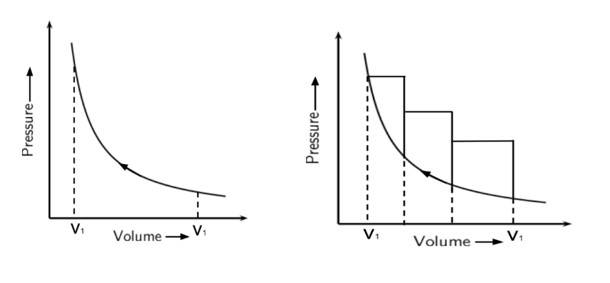Chemistry NCERT Exemplar Solutions Class 11th Chapter Six
Get insights from 63 questions on Chemistry NCERT Exemplar Solutions Class 11th Chapter Six, answered by students, alumni, and experts. You may also ask and answer any question you like about Chemistry NCERT Exemplar Solutions Class 11th Chapter Six
Follow Ask QuestionQuestions
Discussions
Active Users
Followers
New answer posted
5 months agoContributor-Level 10
This is a Multiple Choice Questions as classified in NCERT Exemplar
option (i) and (ii)
In an exothermic reaction, heat is evolved, and system loses heat to the surroundings. Therefore, qp will be negative and? rH will also be negative. Hence, option (i) and (ii) is the correct answer.
New answer posted
5 months agoContributor-Level 10
This is a Multiple Choice Questions as classified in NCERT Exemplar
option (i)
The laws of thermodynamics deal with energy changes of macroscopic systems involving a large number of molecules rather than microscopic systems containing a few molecules. Laws of thermodynamics apply only when a system is in equilibrium or moves from one equilibrium state to another equilibrium state.
New answer posted
5 months agoContributor-Level 10
This is a Multiple Choice Questions as classified in NCERT Exemplar
option (ii)
positive for a spontaneous reaction
New answer posted
5 months agoContributor-Level 10
This is a Multiple Choice Questions as classified in NCERT Exemplar
Option (i)
Enthalpy of sublimation can be shown as
Solid | Liquid | Vapour
Hence, Enthalpy of sublimation of a substance is equal to enthalpy of fusion + enthalpy of vaporisation.
New answer posted
5 months agoContributor-Level 10
This is a Multiple Choice Questions as classified in NCERT Exemplar
option (iii)
The enthalpies of elements in their standard states are taken as zero. The enthalpy of formation of a compound as the reaction could be exothermic or endothermic.
New answer posted
5 months agoContributor-Level 10
This is a Multiple Choice Questions as classified in NCERT Exemplar
option (iii)
Same bonds are formed in reaction (a) and (b) but bonds between the reactant molecules are broken only in reaction (b)
New answer posted
5 months agoContributor-Level 10
This is a Multiple Choice Questions as classified in NCERT Exemplar
option (iii)
When we add equations (b) and (c) we will get equation (a); hence, the Algebraic sum of y and z will give x, x =y + z.
New answer posted
5 months agoContributor-Level 10
This is a Multiple Choice Questions as classified in NCERT Exemplar
option (iii)? S (system) decreases, but? S (surroundings) increases.
New answer posted
5 months agoContributor-Level 10
This is a Multiple Choice Questions as classified in NCERT Exemplar
Option (iii)
In free expansion, w=0 because volume is constant, as the process is adiabatic q = 0 and from first law of thermodynamics.
U=q+w
This means that internal energy remains constant.
Taking an Exam? Selecting a College?
Get authentic answers from experts, students and alumni that you won't find anywhere else
Sign Up on ShikshaOn Shiksha, get access to
- 65k Colleges
- 1.2k Exams
- 679k Reviews
- 1800k Answers

